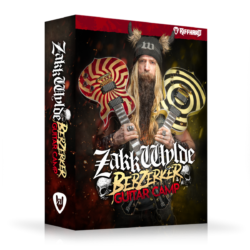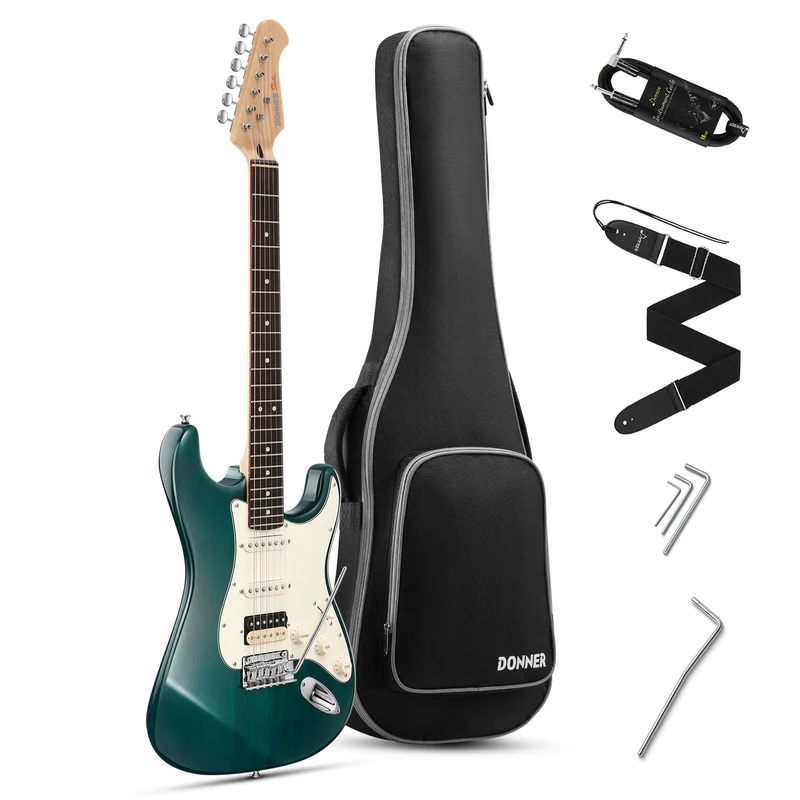Donner Hush Series Silent Guitar Kit Mahogany
Features
• Headless Design and Bone Nut
• Mahogany Body and Neck
• Asymmetrical Neck Profile
• Piezo Pickup
• Onboard Custom Designed Preamp with Phase Button
• All in One Onboard Magnetic Hex Wrench
Our score 4 out of 5 stars
Since 2012 Donner Music has been making affordable, quality instruments for all level of musicians. New from the company is the Donner HUSH-I Silent Guitar. The ultra-compact and lightweight full-scale guitar is perfect for travel and practice featuring a headless and detachable bar-frame design for extreme compaction and quietness with the least amount of wood. The onboard custom-designed piezo pickup and preamp delivers ideal tone via headphones and traditional cable output while also giving you control of Volume”, “High”, and “Low” Knobs as well as an onboard “Phase” button.
Construction-
Donner’s HUSH-I Silent guitar features a small paddle like mahogany body and a headless mahogany neck which comes standard in a matte finish and features an HPL fingerboard, 20 rounded end frets and a bone nut with truss rod access at the body. The natural finish body features an HPL bridge with a bone saddle, custom designed brushed metal barrel tuners and an onboard board preamp with Phase, Volume, High and Low tone settings. The body also features removable ergonomic upper and lower frames which can be installed for a more traditional guitar feel or left off for a more compact footprint. Right out of the included gig bag I could instantly tell that this was a well-built instrument. The neck through construction was nearly flawless and all of the hardware seemed to be of good quality. Though some of the components were a little stiff at first after a couple minutes of play things began loosened up and moving as they should. The hidden magnetic hex- wrench was a nice added touch however if you are moving around a lot the magnet might not be strong enough to keep the wrench fully in place for when you need it next.
Sound-
Though the guitar is marketed as a silent guitar that proved not to be completely the case as prior to plugging in I had to hear just how silent things were going to be. The guitar is considerably quieter than a standard acoustic guitar however given the designs natural acoustic qualities you should expect volumes like that of a highly resonant unplugged electric guitar. With the included in-ear headphones the HUSH-I Donner designed Preamp has a nice mid to high tone with all the EQ’s at noon. If you want a little more low end, I suggest leaving the High at the noon position and turning the Low to around the 3 o’clock position as this creates a nice even tonal blend across all six strings. Upon switching to an amp, I found I was able to achieve a similar balanced tone by dialing the bass back a touch on the guitar as the amp provided more lower frequencies than the headphones provided. The phase button was a nice addition to the pre-amp as it helped eliminate feedback when playing at a louder volume while still allowing for adequate resonance
Playability-
The 25.5” scale gives the HUSH-I a familiar feel despite its drastically unique look. The matte finish and highly polished rounded frets made moving up and down the neck effort free while the near black HPL fretboard simulates ebony quite nicely. I did find the guitar to play a bit stiff with the included strings however a simple change to a lighter gauge should take care of the feel issue and given the guitars silent design the smaller strings should cause for any tonal loss. I also found that when using the guitar with the upper frame bar you have somewhat limited access to the tuners as the lower bout of the bar extends down almost touching B string tuner. The included magnetic wrench did help out in the instance as it just fit in the given space, but I feel shortening the brace all together would have made for a better design.
The HUSH-I’s unique minimalist look might be a little bit too modern for acoustic purists but playing one will quickly make you a believer in that “Looks aren’t everything”. From its rich natural mahogany finish to the superb fret work and versatile onboard preamp Donner’s latest stringed offering is a well-made, nice looking and sounding instrument that won’t break the bank. Guitarist of all levels will enjoy the compactness and sounds that this product offers. Who may even enjoy this product more are parents, loved ones and/or neighbors as the near silent operation make practicing anytime day or night a reality.
For more information on Donner or to Purchase a HUSH-I visit www.donnerdeal.com




